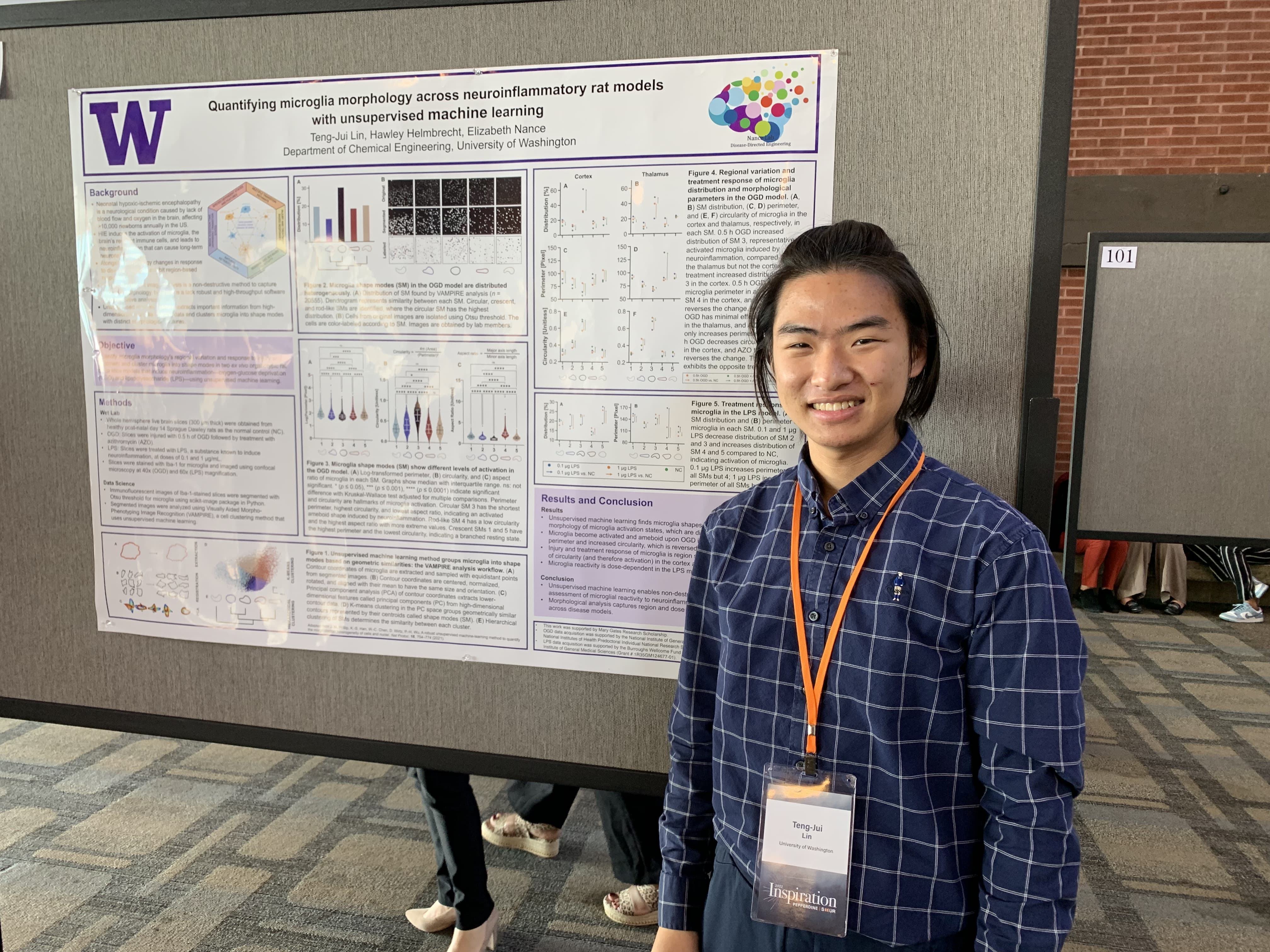Teng-Jui Lin gave a poster presentation at the 2022 Southern California Conference for Undergraduate Research hosted by Pepperdine University.
Title: Quantifying microglia morphology across neuroinflammatory rat models with unsupervised machine learning
Abstract: Microglia, the brain’s resident immune cells, transition between morphological states in response to neuroinflammation and therapeutics while exhibiting regional heterogeneity. Immunofluorescent images acquired by confocal microscopy reveal microglia morphology, but we lack robust and high-throughput software for quantitative morphological analysis that is essential for understanding microglia’s reactivity to neuroinflammation in different rat models. We optimized an image-based morphological analysis method based on unsupervised machine learning in Python to cluster microglia into shape modes. We applied the method to images obtained from two ex vivo organotypic rat brain slice models that induce neuroinflammation: oxygen-glucose deprivation and lipopolysaccharide. The shape modes determined by machine learning capture heterogeneity, regional variation, and injury and treatment response of microglia morphology in both models. The distribution of shape modes is heterogeneous and positively skewed toward the circular shape mode that has the least perimeter, representative of an unbranched ameboid morphology. When comparing injury groups with the non-treated control group, morphological features of area, perimeter, and circularity show time-, dose-, and region-dependent changes. The therapeutic treatment group reverses most changes to the level of control group. In future studies, we will investigate the role of mitochondria-induced energy failure in activating microglia’s morphological response to neuroinflammation and define the relationship between microglia and mitochondria morphology and functional states using our machine learning method. By quantifying and linking microglia’s morphological response to neuroinflammation and functional states across conditions, our method enables non-destructive assessment of microglial reactivity to neuroinflammation and therapeutic performance across disease models.
Link: https://guidebook.com/g/#/guides/sccur2022/schedule/sessions/28362210
